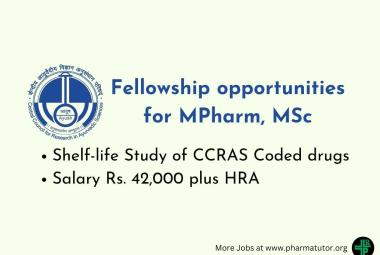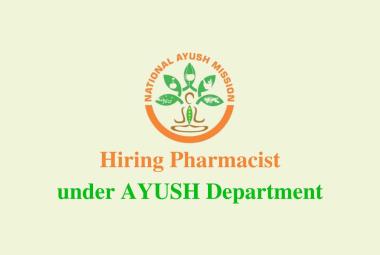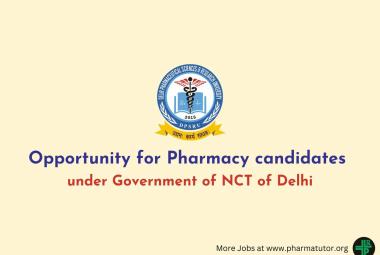About Authors:
A.Prameela Rani1, V.Hema2*
1University college of pharmaceutical sciences,
Acharya nagarjuna University, Guntur.
2*KVSR Siddhartha college of pharmaceutical sciences, Vijayawada.
*hemav_pharma@rediffmail.com
ABSTRACT:
Epilepsy is a disorder of CNS characterized by paroxysmal cerebral dysrhytmia, manifesting as brief episodes of loss or disturbance of consciousness with or without characteristic body movements, sensory or psychiatric phenomenon.
Some drugs such as felbamate, oxcarbazepine, gabapentin, zonisamide, topiramate and pregabalin before consumption their dose and dosage should be checked. All the drugs should be adjusted surely for their dosage especially in renal impairment patients. The present review is on serious effects due to overdosage of various newer anticonvulsants.
[adsense:336x280:8701650588]
Reference Id: PHARMATUTOR-ART-1422
INTRODUCTION:
[1]Multiple new anticonvulsants have been introduced recently and they are supplanting the older medications, whereas the older drugs have well recognized side effects both in typical therapeutic doses and in over dosage, the properties of the newer ones are unique and largely to all but specialists. This article gives a concise overview of the potential complications of these new medications in both therapeutic use and overdose. The newer anticonvulsants overall have more tolerable side effect profiles, better efficacy or are easier to maintain in a therapeutic range. They are replacing the old standard medications such as tegretol, Dilantin, Phenobarbital or depakote. Overdoses of these medications are expected to become more common as their use in psychiatric conditions or seizure patients with co-morbid psychiatric conditions increases. Epilepsy by itself is a risk factor for psychiatric co-morbidities including suicidal behavior.
A complicating factor is that outside of a few academic centers, blood levels are not available for these drugs and are difficult to interpret. This is especially problematic in case of over dosage. In overdose, as a general rule, these drugs can cause lethargy, sedation or increased seizure frequency. At this time, no specific antidotes exist for these drugs. [15] Supportive care and activated charcoal are basic treatments for overdose with these agents. Fortunately, the toxicity of these medications is generally lower than that of the older anticonvulsants.
Zonisamide:
[2]Used for partial seizures and given orally
[3]Dose: 50mg/b.i.d for adults then to 100mg/day after 1 week.
Zonisamide inhibits the flow of calcium through low voltage T-type calcium channels, thus reducing the “pacemaker” current. It also inhibits sodium channels and possibly carbonic anhydrase.
[4]A case was filed on zonisamide overdose. A patient took overdose of zonegran; a very high plasma concentration of 100.1µg/ml was recorded after 31hrs. The patient became comatose and had respiratory depression, but recovered consciousness five days later and had no sequelae. This is treated by emptying the stomach by gastric lavage with usual precautions to protect the airway. General supportive care is indicated.
Somnolence is a commonly reported adverse effect. Although experiences with overdoses of zonisamide are limited, one paper reported status epilepticus, coma and death following an acute zonisamide overdose. Management of zonisamide overdose includes administration of activated charcoal and monitoring for CNS effects.
OXCARBAZEPINE:
Used as monotherapy or adjunctive therapy in the treatment of partial seizures with or without secondary generalized tonic-clonic seizures.
Dose: 600-1200mg b.i.d in adults
8-10mg/kg b.i.d in children below 12yrs and 30mg/kg as maintenance dose in children.
Oxcarbazepine is a keto-analog of carbamazepine which functions as a prodrug. It is rapidly converted to the pharmacologically active 10-monohydroxy-10-oxocarbazepine metabolite. Its mechanism of action is similar to carbamazepine (Tegretol®), except it is a less potent inducer of CYP3A4.
[5]A 13year old boy(wt:60kg,ht:175cm) was brought to emergency department by his mother because of accidental ingestion of 250ml of Trileptal suspension 1hr before, he had vomited shortly after the intake. No other drugs have been ingested. The patient had been diagnosed with autism spectrum disorder at the age of 4yrs and was receiving respiridone (1mg t.i.d) from the age of 10yrs, together with behavior modification. Treatment with OXC had been implemented 6 months earlier to treat persistent aggression towards others and head banging, with good tolerance to treatment and improvement in his disruptive behavior. Because of potential toxicity of ingested dose, 60g of activated charcoal was administered through a nasogastric tube twice, with an interval of 4hr. The patient somnolence progressively improved with in the following 12hr.Twodays after admission the patient was fully recovered, OXC and respiridone treatment was resumed with out incidents and the boy could be discharged.
[6,7]Oxcarbazepine overdoses present with nystagmus, ataxia, and dysarthria, much like carbamazepine overdoses. Oxcarbazepine will be detected by the carbamazepine assay and levels will be in the order of 1-3 mg/L. Treatment of oxcarbazepine overdoses closely resembles that of carbamazepine and starts with the administration of activated charcoal. Occasionally, and especially when faced with very large overdoses, multiple doses of activated charcoal are recommended.
GABAPENTIN:
Used in the treatment of partial and generalized tonic-clonic seizures.
Dose: In adults initially 300mg/day then doses increases. Maintenance dose is 1200mg/day for 37-50 kg.
In children above 12yrs 8-10mg/kg two times a day.
Gabapentin is a cyclohexane derivative of GABA which modulates gabaminergic neurotransmission and calcium channel activity.[8]It is highly lipid and water soluble and is excreted by kidneys. Its half-life in renally impaired patients is 132hrs during nonhemodialysis periods and 3.8hrs during hemodialysis.
In a case series of 20 gabapentin overdoses, lethargy, ataxia and gastrointestinal symptoms developed within 5 hours and resolved over 4-24 hours.[9] A chronic overdose in a patient with renal failure, tremulousness and cognitive deficits were noted.A 46yr old woman with end stage renal disease was admitted somnolent and hypoxic after taking multiple doses of gabapentin over two days without intervening hemodialysis. The patient was tremulous.The symptoms resolved following a dose adjustment.
NOW YOU CAN ALSO PUBLISH YOUR ARTICLE ONLINE.
SUBMIT YOUR ARTICLE/PROJECT AT articles@pharmatutor.org
Subscribe to PharmaTutor Alerts by Email
FIND OUT MORE ARTICLES AT OUR DATABASE
Catatonia following abrupt withdrawal of gabapentin is described. The treatment of patients with gabapentin overdose starts with administration of activated charcoal to limit absorption. There is no specific antidote. Patients with persistent neurologic symptoms need to be admitted to the hospital. Hemodialysis and hemoperfusion are not generally required, except in severely symptomatic patients with significant renal impairment.
PREGABALIN:
Used as adjunct in Partial seizures.
DOSE- 150-600mg/day in 2-3 divided doses for an adult. Maximum dose is 600mg/day Pregabalin is a new gabapentinoid. Chemically related to gabapentin, it is more potent, achieving efficacy at lower doses. Like gabapentin, pregabalin modulates gabaminergic neurotransmission and calcium channel activity. It is approved as an adjunct for the treatment of partial seizures and for the management of diabetic neuropathic pain and post-therpetic neuralgia. Overdoses of pregabalin have not been reported. Thus far, however, limited unpublished experience with pregabalin shows that it is fairly well-tolerated in acute overdoses.
A case has been reported due to its overdose.
A 54yr old male, with a past medical history of HIV infection, HIV peripheral neuropathy and Diabetes mellitus, presented 30 min after ingestion of 8.4g of pregabalin alone. He was alert with a heart rate of 99beats per min. and blood pressure of 127/60mm Hg. A single 50g dose of activated charcoal was administered at presentation in the Emergency department. Approximately 3hrs post-ingestion, he became comatose. There was no history of seizures following presentation. He was intubated and ventilated and was admitted to ICU for supportive care. His admission was complicated by aspiration pneumonia treated with intravenous antibiotics. Then his GCS improved over next 24hrs and was extubated 26hrs after admission to ICU. The patient was reviewed by psychiatrist and discharged himself from hospital. Plasma samples were obtained at admission and whilst on ICU for measurement of serial pregabalin concentrations. The pregabalin concentration at the time he became comatose was 66.5mg/L. This had decreased to 51.2mg/L and 15.2mg/L at approximately 7 and 27hrs post-ingestion resp. Thus the confirmed case of an isolated, significant pregabalin overdose, which was managed with supportive care.
The management of pregabalin overdoses includes administration of activated charcoal and monitoring for CNS depression.
TOPIRAMATE:
Used as adjunct for seizures associated with Lennox-Gastaut syndrome.
Dose: Adult- Initially 25mg at night for 1 week then 25-50mg at intervals for 1-2 weeks.
200-400mg daily. Maximum dose is 800mg/day.
Children- 5-9mg/kg daily. Maximum dose is 30mg/kg/day.
Topiramate is a sulfamate-substituted monosaccharide approved as adjunctive therapy for adults with partial-onset seizures. It is also used for migraine prophylaxis and for the treatment of infantile spasms and other refractory epilepsies in infants and children. Topiramate binds to the kainate glutamate receptor subtype and blocks the Na+ entry into the neuronal cell.
Lethargy, ataxia, nystagmus, myoclonus, coma, seizures and status epilepticus are reported following topiramate overdose.
[10]A case was reported i.e. 21yr old man with idiopathic generalized epilepsy who ingested about 8000mg in a suicide attempt. On admission to the hospital he had nonconvulsive status epilepticus and received 4mg lorazepam i.v. He recovered rapidly despite an initial TPM concentration of 144.6µg/ml. This is the first report of a patient who survived such a high TPM concentration. The case indicates that nonconvulsive status epilepticus could be a manifestation of TPM intoxication.Interestingly, repetition of words (echolalia) and repetitive movements of the mouth (oral-buccal dyskinesia) are reported. Non anion gap metabolic acidosis due to inhibition of renal cortical carbonic anhydrase may be present, along with hyperchloremia and hypokalemia (2.0-3.2 mEq/L). The metabolic acidosis appears within hours of ingestion and can persist for days. Activated charcoal is recommended. Monitoring of electrolytes and blood gases is important. Severe hyperchloremic metabolic acidosis should be treated with sodium bicarbonate 1-2 mEq/kg intravenously. Systemic administration of sodium bicarbonate may impair the anticonvulsive effect of topiramate. Therefore upon admission, higher level of care is recommended in the context of sodium bicarbonate administration. Hemodialysis is recommended in severe overdoses associated with neurologic impairment, electrolyte abnormalities that have failed to respond to conventional therapy and/ or renal insufficiency. Hemodialysis is especially useful to correct intractable metabolic acidosis.
FELBAMATE:
Used for partial seizures with or without generalization and to treat seizures associated with Lennox-Gastaut syndrome.
Dose: 1200mg/day i.e. t.i.d or q.i.d- Adult dose
Children 2-14yrs with Lennox-Gastaut syndrome require 15mg/kg/day t.i.d
[11]First anticonvulsant drug with dual actions on excitatory (NMDA) and inhibitory (GABA) brain mechanisms.[12] Felbamate inhibits NMDA/Glycine stimulated increases in intracellular Ca2+ with a minimal effective concentration.
[13]A 3yr-old child developed vomiting, Ataxia and crystalluria after ingestion of approximately 232mg/kg of felbamate elixir. High powered polarization microscopy of the urine revealed sharp, needle-like crystals. The analysis of urine crystals showed unchanged felbamate (80.9%), monocarbamate felbamate(18.8%) and trace amounts of mercapturic acid conjugates of the metabolite 2-phenylpropenal(0.1%). The serum felbamate level 15hr after ingestion was 138mg/L.[14] Crystalluria and hematuria resolved with Intravenous fluid therapy and the child recovered within 24hr.
CONCLUSION:
New anticonvulsants are now responsible for over 50% of anticonvulsant overdoses. All overdoses to new anticonvulsant agents will present some degree of CNS impairment but there are quite a few notable differences. Although serum electrolytes are important to obtain in all instances, especially important in topiramate and zonisamide overdose because of their capacity to inhibit carbonic-anydrase activity. Specific serum levels of anticonvulsants are not usually recommended in acute setting, except when patient develops seizures or status epilepticus. Treatment of these overdoses begins with administration of single dose activated charcoal. Correction of electrolyte abnormalities is recommended. There are no effective antidotes. Anti-convulsant induced seizures usually respond to benzodiazepines and barbiturates. Hemodialysis should be considered in case of life threatening overdoses of gabapentin and topiramate. Supportive care is sufficient in most instances. It is unclear whether hemodialysis affects the outcome of pregabalin or zonisamide overdoses.
QRS prolongation should be treated with sodium bicarbonate.
REFERENCES:
1. Suzanne doyon, MD, ACMT. Medical director, Mary land poison center. “Overdoses of newer anti convulsants”. Available from mdpoison.com.
2. Seema jain, Nidhi Bharal Agarwal. Newer anticonvulsants: An insight into the adverse effects. The Pharma Review, September- October 2010; 69-74.
3. Various doses of drugs. Available from merckmanuals.com
4. A case report due to overdose of zonegran. Available from www.drugs.com/uk/zonegrancapsules.html
5. Maura pedrine etal. Acute oxcarbazepine overdose in an autistic boy. J.clin.pharmacol 2009; May: 67(5): 579-581.
6. Mazza M, Bria P, Mazza S. Efficacy and safety of oxcarbazepine in bipolar disorder. Can.J.Psychiatry 2007; 52:242-3.
7. Cansu A, Yesilkaya E, Serdaroglu A, Hirafanoglu TL, etal. Evaluation of bone turns over in epileptic children using oxcarbazepine. Pediatric Neurol 2008; 39:266-71.
8. Wong ICK, Mawer GE, Sander JWAS, the post marketing surveillance of gabapentin, lamotrigine and vigabatrin in patients with chronic epilepsy[abstract]. Seizure 1988; 7:423.
9. Reeves AL, So EL, Sharbrough FW, etal. Movement disorder associated with the use of gabapentin. Epilepsia.1996; 37:988-90.
10. Brandt C, ElsnerH, Furatsch N, Hoppe M, Nieder E, Rambeck B, Ebner A, May TW. Topiramate overdose: a case report of a patient with extremely high topiramate concentrations and nonconvulsive status epilepticus; a case from Bethel Epilepsy Centre, Department of General epileptology, Bielefeld, Germany; Epub 2009 Nov 3.
11. Pellock JM. The place of felbamate in epilepsy therapy: evaluating the risk. Drug safe1999; 21:225-39.
12. Rho JM, Donevan SD, Rogawski MA. Mechanism of action of anticonvulsant felbamate: opposing effects on N-methyl-D-aspartate. Ann.Neurol 1994; 35:229-34.
13. A case report of felbamate overdosage. Available from support4hope.com/anticonvulsant medications/felbamate-felbatol.htm
14. Meier KH, Olson KR, Olson JL. Acute felbamate overdose with Crystalluria. Clinical toxicology 2005;43(3):189-92.
15. Flomenbaum, Goldfrank, Hoffman, Howland, Lewin; Goldfrank’s toxicologic emergencies: The clinical basis of medical toxicology 2006; ed.8: 731-45.
NOW YOU CAN ALSO PUBLISH YOUR ARTICLE ONLINE.
SUBMIT YOUR ARTICLE/PROJECT AT articles@pharmatutor.org
Subscribe to PharmaTutor Alerts by Email
FIND OUT MORE ARTICLES AT OUR DATABASE









